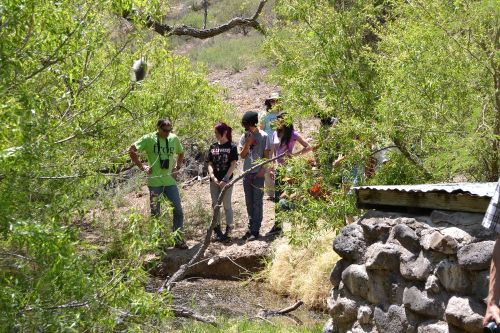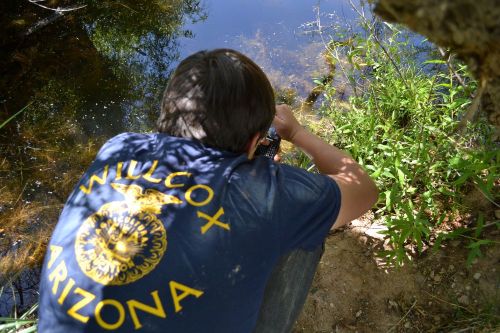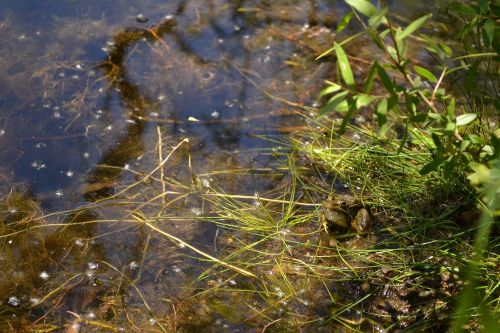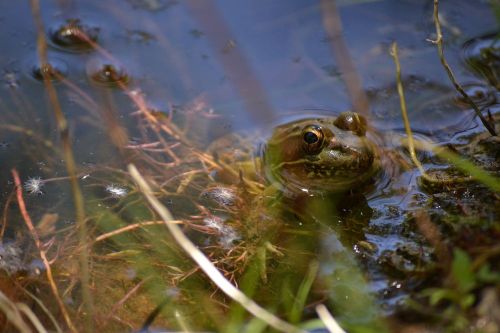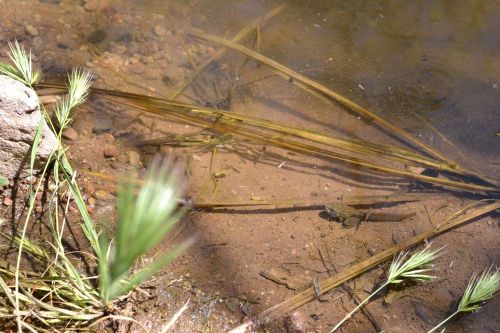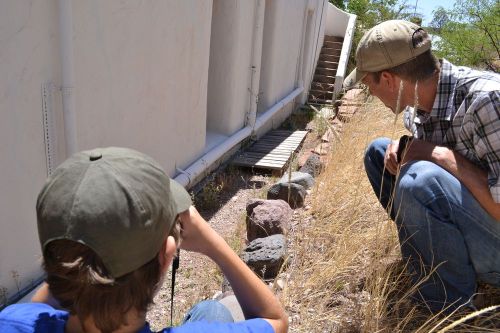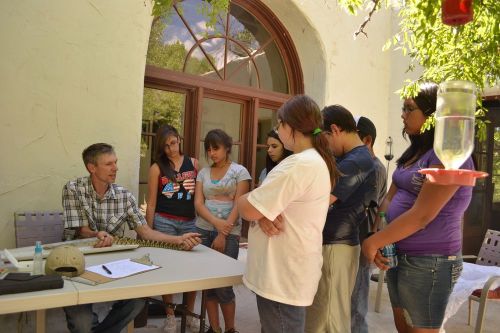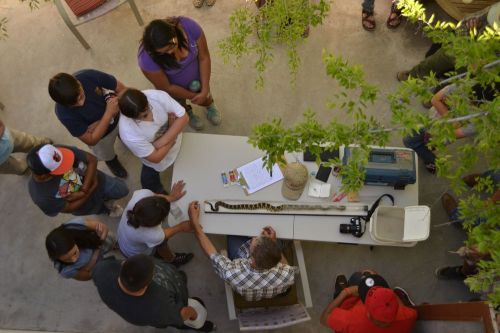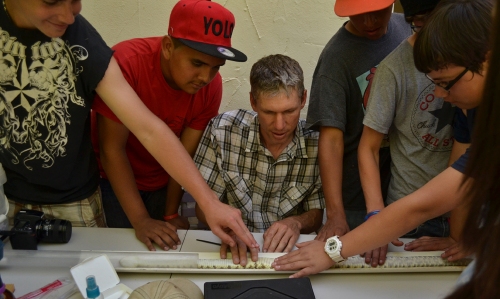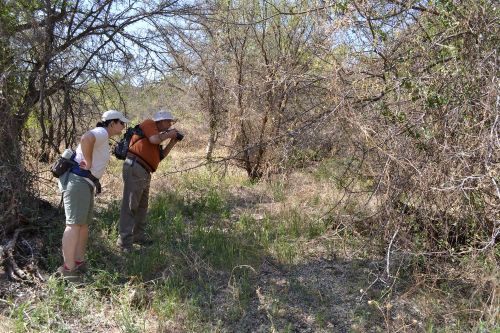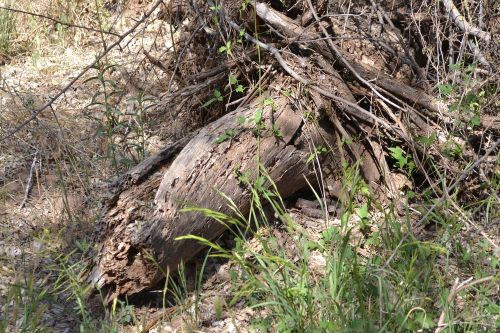Mother's day is a much bigger deal than Father's day. Why? Well, there's just something extra special about mom (sorry Dad!). So, today's post is about an under-appreciated group of moms (you guessed it), Arizona black rattlesnakes!
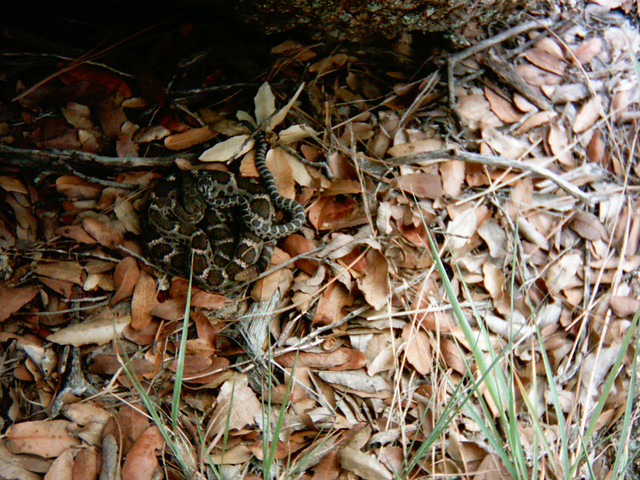
Human moms - you think you have it tough? Rattlesnake maternal duties may only last a couple weeks, but during that time they may have to protect their kids from extreme temperatures, a suite of predators, annoying (and deadly?) squirrels, and clumsy humans with cameras... By the time they give birth, mother rattlesnakes likely haven't eaten in weeks or even months, but they wait another couple weeks to give full attention to their newborns. So here's to you rattlesnake mommies!
We'll start with the most famous of all, Cap Mama, who showed us what a typical day is like for a new rattlesnake family:
For an explanation of the behaviors seen in that video, check out this post.

What a beautiful family she has!
Sigma may have been one of our smaller mothers, but what she lacked in size she made up for in bravery:
Check out the full story of Sigma's squirrel battles here.
We've been lucky enough to see Woody and Alice with two different litters.
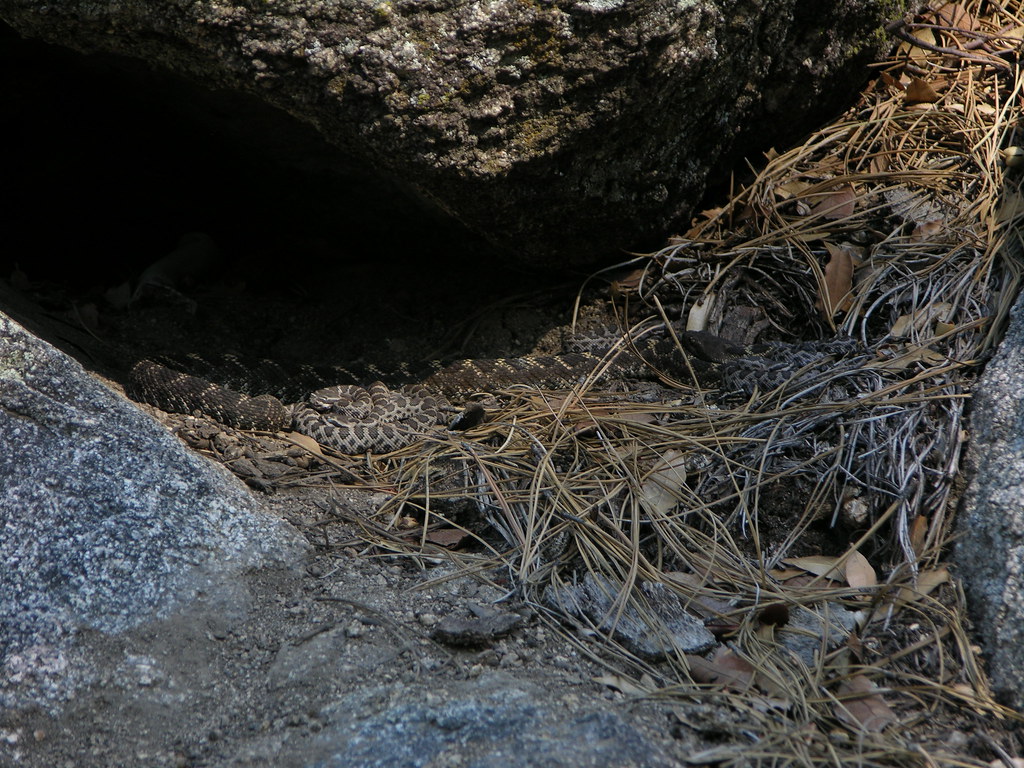
Alice's family, 2010

Alice's family, 2012
Woody's family, 2012. You can watch more timelapse videos of Woody's family here and here.
Every mom needs a day off. So the lucky (or smart?) rattlesnakes that nest in groups help each other out with maternal duties. If one is still pregnant, and thus needs to be on the surface basking, she attend to the newborns while the new mother stays in cover for a well-deserved rest. Priscilla was the first rattlesnake we observed exhibiting this baby-sitting behavior.
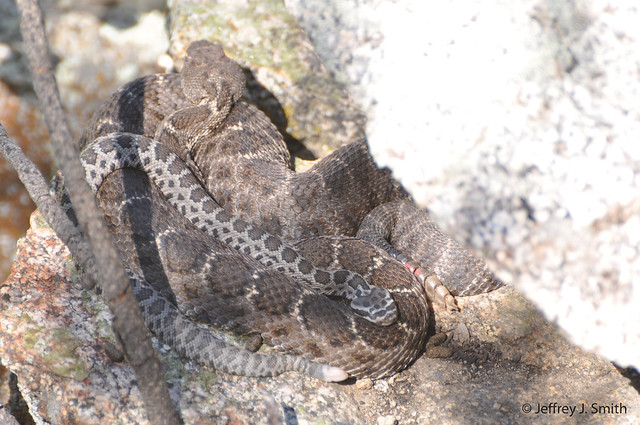 You can read more about Priscilla and House here.
You can read more about Priscilla and House here.
Male rattlesnakes occasionally help out in this way too. Although we've never observed any active care or protective behavior from males, just the presence of a large rattlesnake may be enough to deter some predators.
Still image of the group:
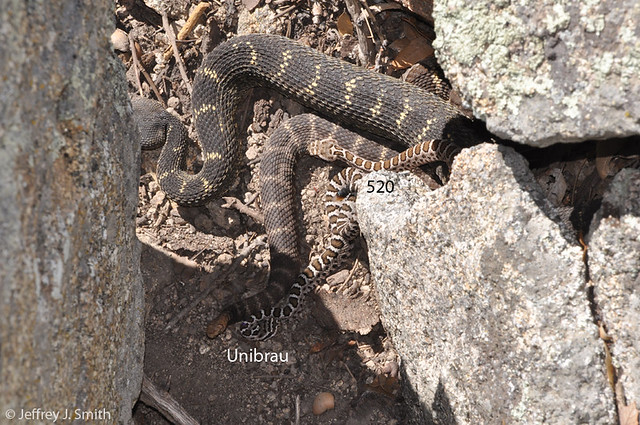
Green Male (adult male) is the large black rattlesnake at the top of the image and the mother (Devil Tail) is the smaller, brown adult (mostly her tail and rattle are visible).
A handful of newborns follow Roger (adult male) out of the nest entrance to a preferred basking spot.
Sometimes the youngest (smallest) mom gets stuck with the surface duties of caring for the newborns. Eve was the smallest of the pair of snakes that nested at this site; we saw her often on the surface with way too many babies to have all been her own. The older (larger) female was rarely seen on the surface with the newborns.
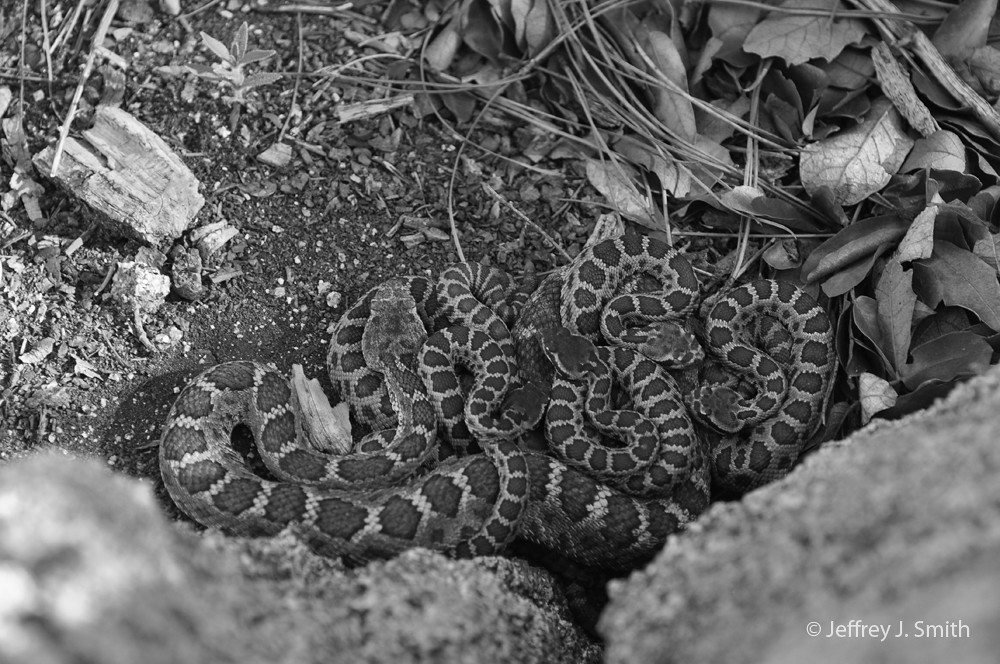
This is the first Mother's day in years that we haven't spent at dens with our rattlesnake mothers-to-be. But, as of last week, two (Persephone and Luna) of our three Muleshoe rattlesnakes are still near their dens. While this is atypical rattlesnake behavior in general, it is characteristic of pregnant Arizona black rattlesnakes. So maybe we'll have a couple more names to add to this list next year!
Sunday, May 12, 2013
Wednesday, May 1, 2013
Muleshoe's first Save the Frogs Day was a success! Thirty people (14 adults and 16 kids) participated in this year's event, including a science class from a local middle school. We learned about our local frog (Lowland leopard frog, Lithobates yavapaiensis), built them a new pond, and of course ran into a snake or two.
We'll let the photos (and video) tell the story.
Dennis Caldwell (green shirt) of the FROG Conservation Project, discusses threats to frogs while pointing out some Lowland Leopard Frogs in the Twin Lakes.
One of the students gets up close and personal with a Lowland Leopard Frog.
This frog didn't seem to mind being photographed...
And was quite photogenic!
The middle school students helped us install a new frog pond at Headquarters. The following timelapse video was taken as they dug the pond.
Can you spot the newly metamorhposized frog with the large tail?
Saturday was all about frogs, but it's hard NOT to find snakes at Muleshoe! Several made an appearance, including our old friend Porter (male black-tailed rattlesnake), who reappeared at the Visitor Center for the first time this year. Last fall he was one of the last rattlesnakes seen at the Visitor Center and also hunted there last summer.
Jeff helps one of the kids find Porter, who is resting under the little wooden boardwalk.
Fun for the entire family!
We captured another black-tailed rattlesnake (Tarzan) that we processed (marked and measured) with the students.
Sound like fun? Join us for Snake Count, which is coming up in just a few weeks! Check out our event page for more information.
Monday, April 8, 2013
When SocialSnakes started working at the Muleshoe Ranch Preserve in September 2011, we were interested in whether Arizona black rattlesnakes (Crotalus cerberus) den in groups here at the southern and low elevation end of their geographic range.
They do!
Last year we observed at least one Arizona black rattlesnake sharing a den at Muleshoe with several other reptile species (details here), but we still hadn't seen anything like the dens in cooler places (for example).
Until now.
The following video was shot at Boyett's den on 31 March 2013. Looks like we have a winner!
How many rattlesnakes do you see?
Monday, February 4, 2013
February is “Women and Snakes” Month!
While herpetology (the study of reptiles and amphibians, including snakes) is still largely a man's world, there are more women in the field each year. Each day this month the Center for Snake Conservation (CSC) is highlighting a different woman working to promote snake conservation.
Today they're highlighting us (or rather, one of us):
 THANKS CSC! Follow them on Facebook to learn about other women working in snake conservation and all the other important work done by the CSC.
THANKS CSC! Follow them on Facebook to learn about other women working in snake conservation and all the other important work done by the CSC.
Tuesday, January 22, 2013
"Fear of the dangers of anthropomorphism has caused ethologists to neglect many interesting phenomena, and it has become apparent that they could afford a little disciplined indulgence." (Hinde 1982)
"To endow animals with human emotions has long been a scientific taboo. But if we do not, we risk missing something fundamental, about both animals and us." (de Waal 1997)
Many scientists, in their efforts to be unbiased and avoid anthropomorphism (assigning human traits to non-human animals), engage in anthropodenial (de Waal 1997). Anthropodenial is the opposite of anthropomorphism: the refusal to acknowledge humanlike characteristics of non-humans animals, which is just a bias of another sort. As indicated by Hinde and de Waal above, scientists have missed some interesting animal behaviors because of anthropodenial. (For more on this topic, check out de Waal 1997.)
For example, numerous observations of rattlesnake families dating back more than a hundred years were dismissed by the godfather of rattlesnake biology, Laurence Klauber:

Their propinquity, such as it is, does not result from any maternal solicitude; rather it is only because the refuge sought by the mother is also used as a hiding place by the young. (Klauber 1956)
In 1992, Harry Greene, Peter May, David Hardy, Jolie Sciturro, and Terence Farrell published an article on viper parental care in a peer-reviewed book. In it, they present evidence that not only do families aggregate, but mother snakes actively defend their newborns.
Was there some technological advance at that time that finally revealed this behavior to scientists? No. But, it's difficult to see what you don't look for and these authors took the time to look. They also reviewed others' observations of parental care in vipers, demonstrating that this behavior is widespread and more than mere attendance.
When we began our study of social snake behavior in 2010, we were armed with cameras, binoculars, and field notebooks. With these simple tools we managed to document behavior that was once so easily dimissed. How? We were looking for it. And maybe more importantly, we largely left the snakes alone and let them tell their story.
This is Woody's story.
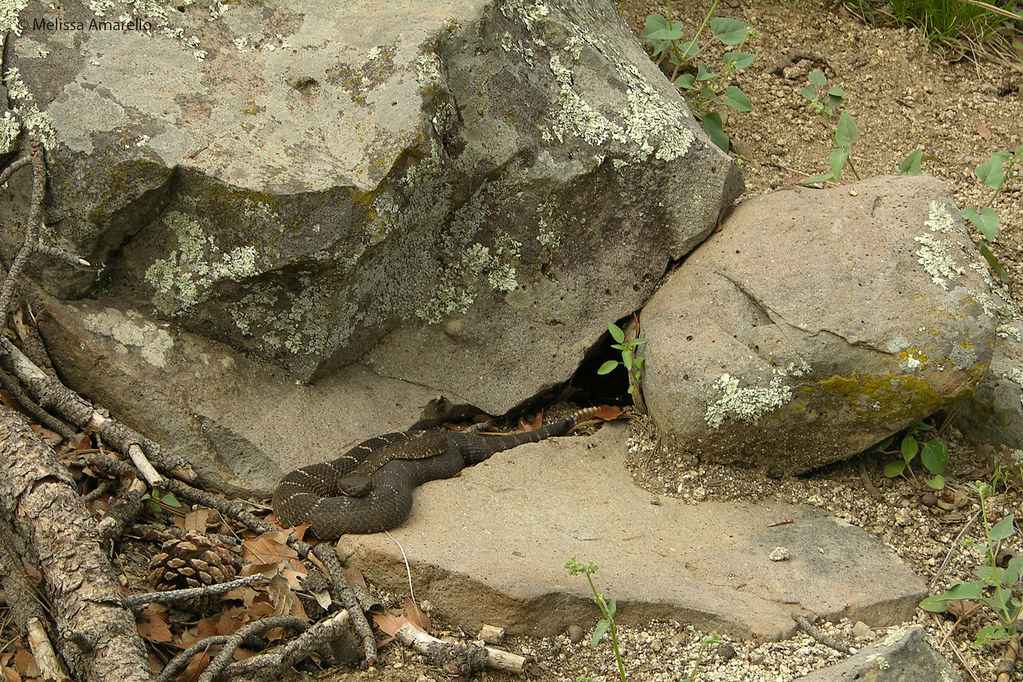
We first encountered Woody (adult female Arizona black rattlesnake, Crotalus cerberus) in a pile of rocks and a jumble of downed pines in May 2010, about 150 yards from any known dens. We visited this area a number of times through the summer, and found her almost every time, relaxing near some rocks or coiled among woody debris (for which she is named). Because of her camouflage, we would have to search around for her, which sometimes brought us in close proximity, but Woody was even tempered, never rattling or attempting escape.
Then one day in late August, everything changed. We discovered several newborn rattlesnakes basking near Woody's favored spot. As we approached to get a closer look, but no closer than we had approached Woody so many other times, we heard muffled rattling from under the rocks. As we started snapping photos of the little ones, Woody poked her head out of her shelter and then proceeded to crawl from her refugetoward us, still rattling, and glaring directly at us. Our once-placid Woody was now fearless and wanted us to know she would not tolerate our advance. Impressed with her maternal instincts and not wanting to distress her or her young, we quickly backed off.

We were more careful in future visits to Woody's nest, but she remained a vigilant mother: rattling from within her shelter if we got too close, or assuming a defensive posture in between us and her kids (as shown in the photo above). The young caught on too, retreating into shelter if mom was upset.
Eventually the babies shed and the family split up, each trying to get a meal before it was time to enter their den for the winter. Since Woody's nest wasn't located close to a known den, we weren't sure when we would see her again. Was Woody's den located at or near her nest site? Would she show up at one of the dens we already monitored?

On the very first day we visited the dens in April 2011, we spotted Woody, basking in a popular spot with several other snakes, including some little ones that were born the previous summer. One of these juveniles turned out to be Woody's baby, Adam.

The photo on the left is Adam (newborn on left) and Woody (right), at her nest in August 2010. Woody's nest was farther away than most in 2010, but Adam found his way to their den (photo on right taken at den basking area in spring 2011). In 2011 we starting using timelapse cameras, which caught Woody and Adam as they basked together:
Although it is not unusual to see adult and juvenile rattlesnakes basking together, Woody's interest in Adam is striking. Does her maternal regard for her offspring's well-being extend beyond the nest? If her mothering is genetic and beneficial to Adam, then such care could evolve. We have seen similar behavior in another female, following a juvenile from the previous year's nest (see this post for another example of this behavior).
Many underestimate the wonders and complexity of the natural world, especially when it comes to snakes. The more we remain open to the possibilities of nature, the more we will be able to see. Even though some of their greatest admirers denied it, rattlesnakes can be caring mothers.
References
de Waal, F. B. M. 1997. Are we in anthropodenial? Discover 18:50-53.
Greene, H. W., P. May, D. L. Hardy Sr., J. M. Sciturro and T. Farrell. 2002. Parental behavior by vipers. Pp. 179-205 in G. W. Schuett, M. Hoggren, M. E. Douglas, and H. W. Greene, eds. Biology of the Vipers. Eagle Mountain Publishing, Eagle Mountain, Utah.
Hinde, R. A. 1982. Ethology: Its Nature and Relations with Other Sciences. Oxford University Press, New York, New York.
Klauber, L. M. 1997. Rattlesnakes: Their Habits, Life Histories, and Influence on Mankind. 2nd ed. University of California Press, Berkeley, California.
Friday, November 30, 2012
 |
| A western diamond-backed rattlesnake (Crotalus atrox) with his mouth sewn shut for a rattlesnake roundup. Snakes are not under anesthesia during this painful procedure, but instead thrown in a freezer for awhile beforehand so they are too cold to move. Photo by Kim LaForest, courtesy of RARR. |
Monday, November 26, 2012
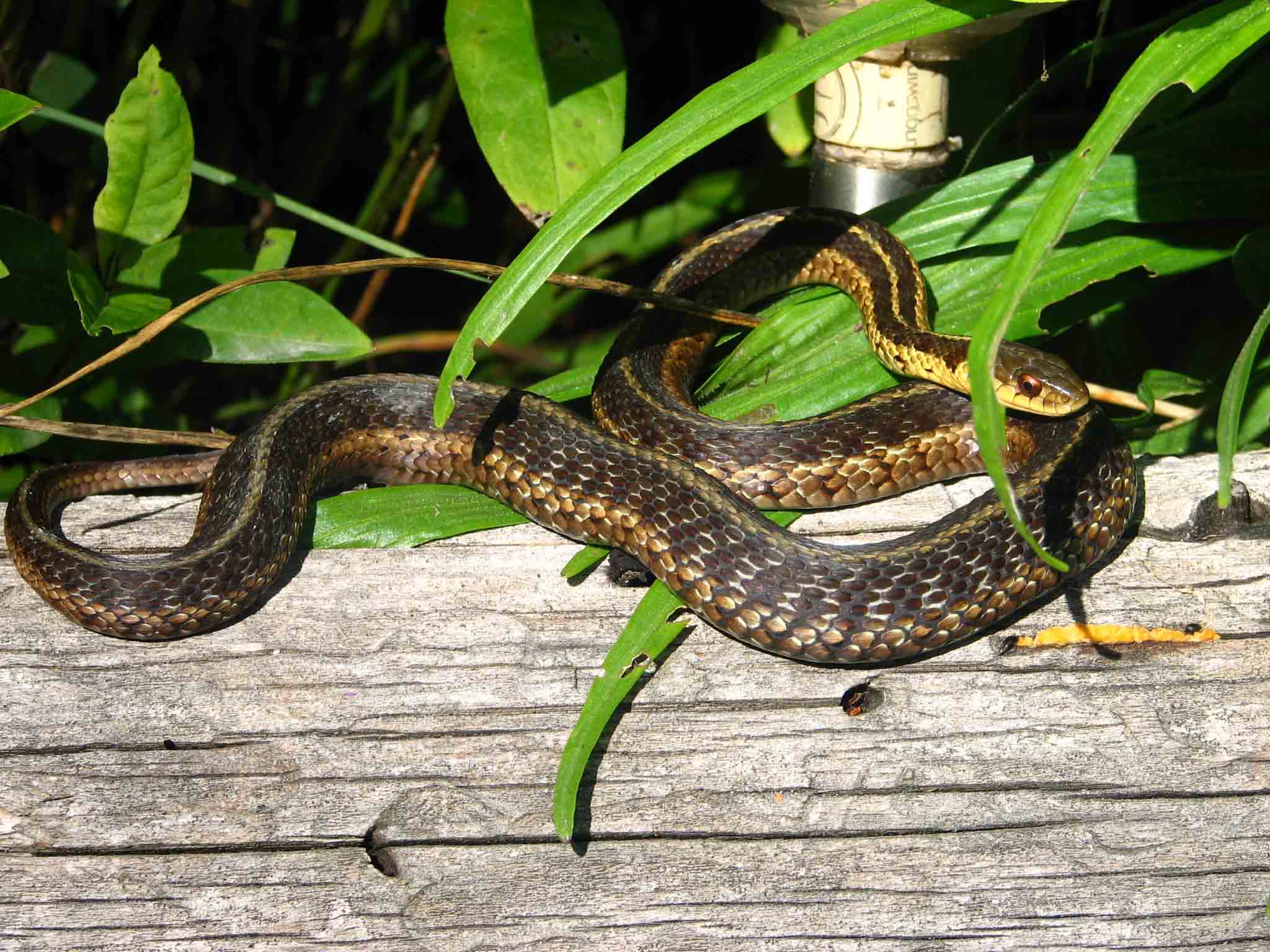 |
| From the website "How can you cuddle without arms?" |
I was contacted a while ago by a student in the Animal Behavior class at Reed College. For this class, pairs of students design a website on an animal behavior of their choice and this student was working on social snake behavior.
Check out their excellent website, "How can you cuddle without arms?".
What a fun and useful assignment! I am totally impressed with this class, but of course you'd expect great things from a class with this on their homepage:











